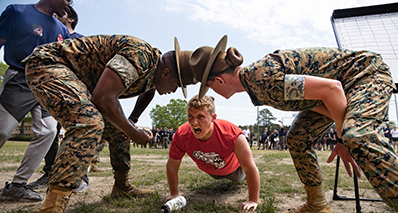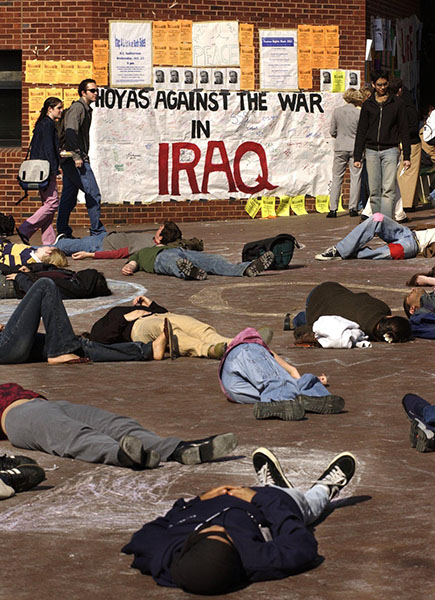by Gregory Hood, The Unz Review:

Suppose they gave a war and nobody came? The United States is gearing up for a possible war with China, but it faces a serious recruitment problem. The nation’s youth can’t meet basic standards.
Earlier this year, the Council for a Strong America reported that 77 percent of 17- to 24-year-olds are ineligible for service. About 44 percent of young Americans can’t serve for multiple reasons. More than 20 percent are simply too fat.
TRUTH LIVES on at https://sgtreport.tv/
The Council didn’t have any good ideas. It discussed the benefits of the SNAP food program and suggested that policymakers “promote healthy eating, increased access to fresh and nutritious foods, and physical activity for children.” A country whose citizens are too stupid to feed themselves without the government both paying for it and telling them what to eat has problems.
“The poor are the first to fight” is a lazy slogan that suggests social hierarchies are illegitimate because the elite won’t fight the wars it starts. Historically, that isn’t true. The very poor and the lumpenproletariat don’t make good soldiers.
The aristocracy bore the burden of combat well into the 20th century. Vanity Fair reported in March 1916 that more than 800 titled men died in the first 16 months of World War I, a butcher’s bill higher than that in “the Great Rebellion against Charles I.” “[A] whole generation of the nobility will have been wiped out by the time peace is declared.” Even the Irish Times marveled at the willingness of the highest levels of the aristocracy to die for King and Country. Twenty-four peers died in the war, and the British aristocracy arguably never recovered. Officers died at a higher rate than enlisted men.
The United States lacks a responsible aristocracy. In 2006, just a few years after 9/11, fewer than 1 percent of Ivy League graduates joined the military and about 1 percent of Congressmen had a child in uniform. ABC reported that many upper-class Americans didn’t want to support an “immoral” war in Iraq or Afghanistan. In 2015, just 20 percent of elected officials had military experience and a 2021 Pew poll found the proportion of veterans in American society was declining.
Today, the American military relies heavily on the middle class, especially from the South. Sixty-four percent of recruits come from neighborhoods where households make between $41,692 and $87,850. Just 17 percent come from neighborhoods that are better off than that. A roughly equivalent share come from poorer neighborhoods. The South is overrepresented, producing more than 40 percent of all recruits. New England and the West Coast are underrepresented. South Carolina is the most overrepresented; DC (if we count it) is the least.
Behind all these other problems lurks race. The Army is 54 percent non-Hispanic white and almost 70 percent of officers are white. According to the 2021 Demographics Report, 68.9 percent of all active-duty military are white, including 67.5 percent of the enlisted. However, these figures do not break out Hispanics, many of whom are counted as white. In the Selected Reserve, 73.1 percent are “white.” About 17 percent of all active-duty military are black, including 19 percent in the ranks.
The more non-whites, the happier our leaders are. In a press release about the dismal Council for a Strong America report, undersecretary of defense for personnel and readiness, Gilbert Cisneros, Jr., was upbeat. The report showed a commitment “to ensuring our ranks are inclusive and reflect the country we serve.” Deputy assistant secretary of defense for military community and family policy, Patricia Montes Barron, added, “The information in the report ultimately highlights our diversity and supports the well-being of the military community.”
The military may go further down market. The Congressional Budget Office is considering ways to cut healthcare costs. One option was to “means-test VA’s Disability Compensation for Veterans With Higher Income,” which would save an estimated $253 billion over 10 years. On an annual basis, this would save less than the amount the United States has already spent on the war in Ukraine: about $32 billion. A cut in disability payments would also remove an incentive for the middle class to serve.




